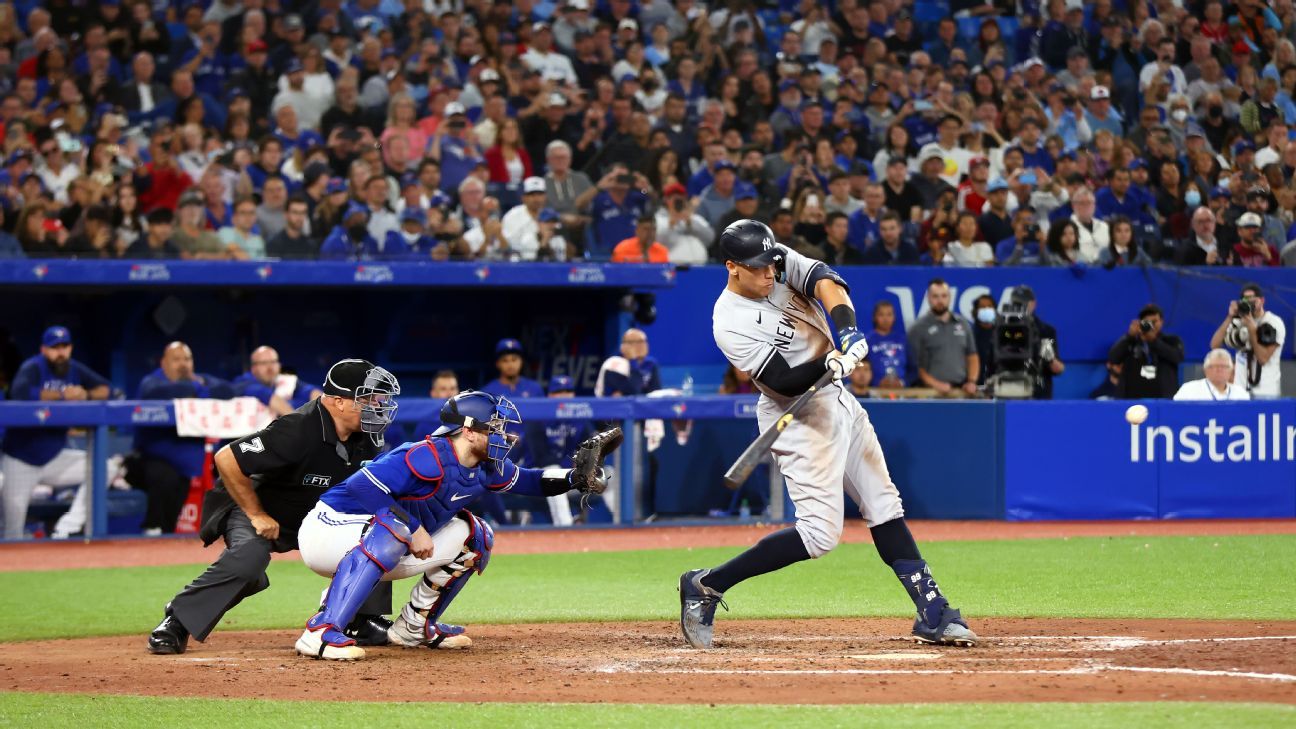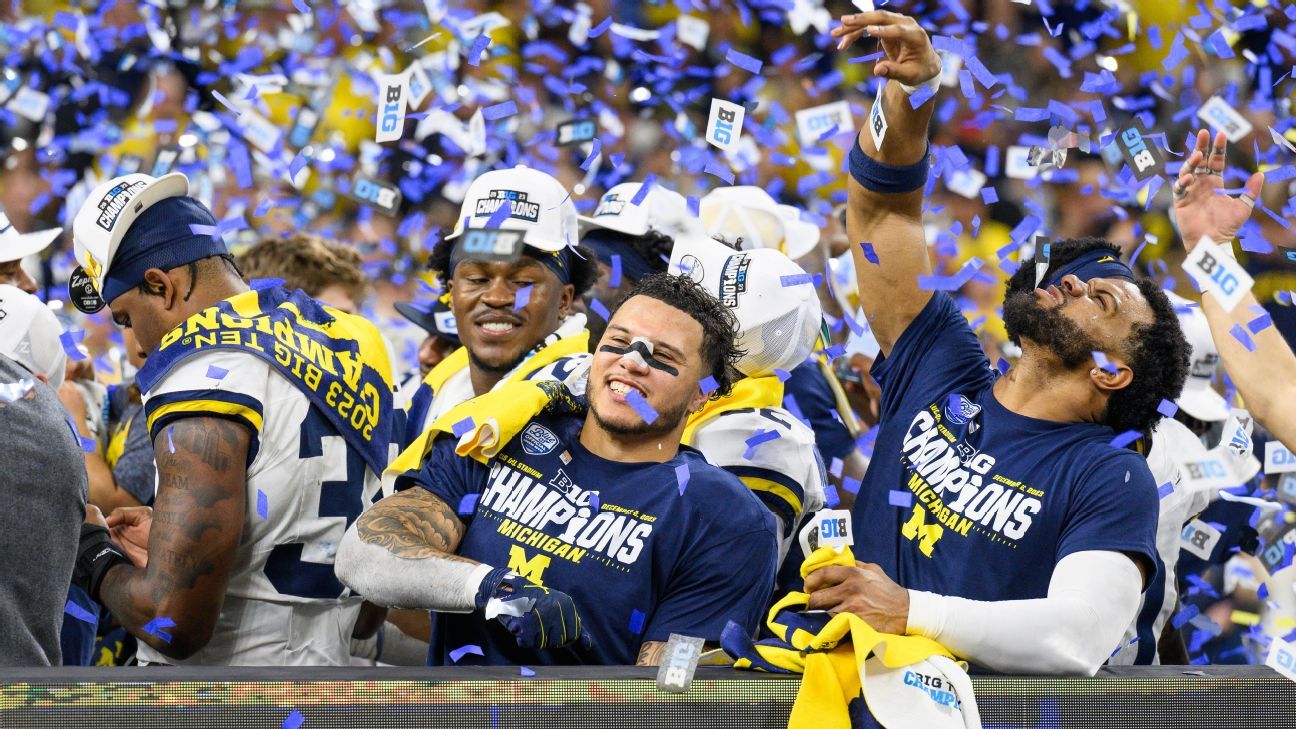The Tampa Bay Lightning won Games 3 and 4 at home to knot up their Eastern Conference finals series against the New York Rangers at 2-2.
They looked very much like a back-to-back Stanley Cup champion in doing so: Controlling play, coming through in the clutch and getting superstar performances from winger Nikita Kucherov, center Steven Stamkos and goalie Andrei Vasilevskiy.
Game 3 was a 3-2 stunner, with winger Ondrej Palat scoring the game-winner with 42 seconds before overtime. Game 4 was a more dominant effort, with the Lightning’s defense and forecheck grinding the Rangers to a halt in a 4-1 win.
“We’re one of three teams left here. You expect their best. You want their best. And we want to show we can beat the best,” said Rangers defenseman Jacob Trouba. “We feel we’re an up and coming team. We’ve arrived. We want to play these games.”
As the series shifts back to New York, here are five more takeaways from the Eastern Conference finals:
Lightning coach Jon Cooper felt that Vasilevskiy was impacted by the team’s nine-day layoff between sweeping the Florida Panthers and Game 1 against the Rangers.
The highly anticipated goalie duel between former Russian national teammates started a bit lopsided. In Games 1 and 2, Vasilevskiy, the Lightning’s playoff MVP in 2021, posted a .826 save percentage with a 4.80 goals-against average and a minus-3.86 goals saved above expected at 5-on-5. Shesterkin, expected to win the Vezina Trophy as the NHL’s top goalie this season, had a stellar .964 save percentage at 5-on-5 in the Rangers’ opening wins.
The script flipped in Tampa Bay. Vasilevskiy didn’t allow an even-strength goal and posted a .953 save percentage overall in his two wins. Shesterkin, no slouch, had a .933 save percentage at 5-on-5 and a 0.926 save percentage overall in Tampa Bay.
“He’s getting his mojo back,” Cooper said. “Now that he’s getting some games under his belt and he looks great.”
The Rangers, however, felt like they didn’t challenge him enough in Games 3 and 4. More specifically, there was too much hesitation in their game.
“It wasn’t second and third-chance opportunities in the first two home games. It was moving from east to west, across the middle of the ice, getting the puck off your stick in less than half a second. I don’t care who’s in net. Every goalie in the world struggles with a puck that goes east/west, has to battle through traffic, and then when it gets released on net they can’t get set to it. That’s what gives us our best chance,” forward Chris Kreider said.
“To a man, I think we can say that we all received a pass tonight, got it, picked our head up and tried to pick a spot as opposed to getting it off quick. Even if he makes a save, the rebound is going to be hard to control off a pass like that. In the first couple of games, that’s how we found success,” he said.
The Cirelli line emerges
What motivated Cooper to drop Anthony Cirelli from their top line and slide him between wingers Brandon Hagel and Alex Killorn for Game 3?
“Stopping them,” he said.
The aforementioned “them” was the trio of Mika Zibanejad, Kreider and Frank Vatrano, who factored into four even-strength goals during the Rangers’ two wins at Madison Square Garden. The Lightning had the last change at home. They deployed that new checking line against Zibanejad’s group. In Game 3, the Cirelli line was plus-19 in shot attempts; in Game 4, shot attempts were an even 15-15. But in both games, they kept the Rangers’ top scorers off the board at 5-on-5.
“It’s a good line. They have their role to do. I thought we created a little bit more offensive [in Game 4]. Like we said earlier in the playoffs, we just have to worry about ourselves and not too much about who we’re playing,” Zibanejad said.
Killorn credited Cirelli, one of the NHL’s best defensive centers, for being a vital factor in slowing Zibanejad.
“As a line, we keep it pretty simple. We do our best to get pucks behind their defensemen, as cliché as it sounds. In those situations, all three of us are all pretty good at protecting the puck down low. As a line, if we’re making them play defense for a good third of the game, that’s successful for us in what we’re trying to do,” Killorn said.
The Rangers will have to find a way to get their top line away from this pesky trio in Game 5.
More Rangers power-play dominance
The Rangers’ power-play continues to be on an absolute roll. Artemi Panarin‘s power-play goal in Game 4 was their 17th of the postseason on 53 opportunities — their 32.1% conversion rate is the best in the Stanley Cup playoffs through 18 games. The Rangers have now scored a power-play goal in eight of their last nine postseason games.
It starts with Adam Fox at the blue line, who joins Cale Makar of the Colorado Avalanche — not coincidentally the second best power-play team in the Stanley Cup playoffs — as the best young quarterbacks in the NHL.
“He’s shifty and extremely deceptive. You have to defend him differently than other guys,” Cooper said. “He doesn’t have the hardest shot in the world, but he knows how to get it through, and that can be even more dangerous. He knows where to put them. He knows what stick to shoot for — not necessarily trying to score but knowing that he’s going to put a puck in position for someone to score. He keeps pucks in. He anticipates where a [defenseman’s] out is and where their clear is. And he always seems like he’s in the right spot. He’s a prototypical quarterback up there.”
Rather than try to shut down Fox, the Lightning focus on disrupting two other players on the Rangers’ power play: Panarin, who expertly distributes the puck, and Zibanejad, who loves taking one-timers in the “Ovi Spot” on the power play.
“We can keep the puck out Panarin’s hands a little bit less, and one or two fewer passes going to Zibanejad,” Cooper said.
The Lightning coach believes they’re holding their own against this potent unit.
“It’s a tricky power play. But in the end, there’s no better against us than they were all year,” he said. “They were 25% [in the regular season], which is a damn good power play. But we’re hoping to hold them to less than what they were doing in the regular season. Right now, we’re right on par.”
Actually, it was 25.2%. But who’s counting?
Injuries
The Rangers got some major injury breaks in the first two rounds — just ask any Pittsburgh Penguins or Carolina Hurricanes fan, and they will emphatically acknowledge that. But injuries have caught up to the Rangers in the Eastern Conference finals, and not just the ones defenseman Ryan Lindgren miraculously keeps playing through.
Rangers coach Gerard Gallant kept saying he expected center Ryan Strome, who suffered a lower-body injury in Game 3, would be available for Game 4. He was not, and Gallant is now calling him “day-to-day.” Center Filip Chytil, arguably the most important player on the Rangers’ dynamic “Kid Line,” left Game 4 in the second period with an upper-body injury. Gallant said Chytil “should be fine, but we’ll have to wait and see.” Center Barclay Goodrow, who blocked a shot with his foot in Game 3, managed to play in Game 4.
At least one Ranger seems to be working his way back: Forward Sammy Blais, who has been out since Nov. 14, 2021, with a torn ACL. He skated in a regular jersey during practice ahead of Game 4. Gallant still calls him a longshot to play in the conference finals.
“Every team is dealing with injuries. We like the depth on our team. I think we can manage and overcome injuries,” Trouba said. “Do we miss them? Yeah. Do we hope they come back? Yeah. But we’ve gotta be able to play without them.”
Meanwhile, the Lightning are still waiting for the return of star center Brayden Point after he left Game 7 of the first round against the Maple Leafs with a lower-body injury. He’s been skating with regularity and there’s still hope he returns during this round.
“If it goes seven, optimism stays up. If it goes five, it gets a little dicey,” Cooper said.
Well, it’s going at least six.
Finally, no quit, or panic, in N.Y.
Game 5 is back at Madison Square Garden on Thursday, with the series tied 2-2.
“We have to be positive. We’ve been in a worse spot before. We’re OK. But we do well at the Garden. Our fans? It’ll be nice to see them again,” Panarin said.
The Rangers winger said the losses in Tampa will make his team “more hungry and angrier” heading back home. “Sometimes that’s good when you’ve lost. I think it’s just how we’ll react. I don’t think we’ve lost our confidence. Only be more hungry next game,” Panarin said.
They should be confident: The Rangers are on an eight-game winning streak in New York, with their only home postseason loss coming in triple overtime of Game 1 against the Pittsburgh Penguins in the opening round. They’ve simply been a different team home and away in their Stanley Cup playoff run. At Madison Square Garden, they average 4.22 goals per game and give up 2.22 goals per game; on the road, the Rangers average 2.44 goals per game and give up 3.67 goals per game.
“I’m hoping it’s going to be a homer series. That’s what it looks like so far. We’re pretty good in our building, they’re pretty good in their building,” Gallant said.
Like his players, Gallant believes the Rangers can be confident going home. Just not overconfident.
“They better be calm, but they better go out and play harder,” he said. “It’s a two out of three. We have the home ice. But we’ve gotta play better.”





